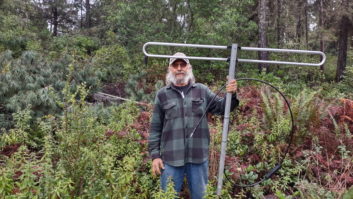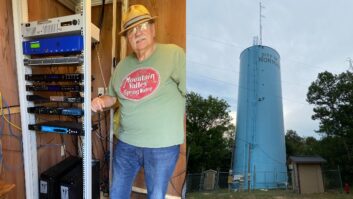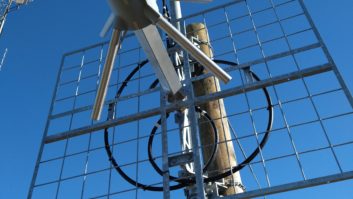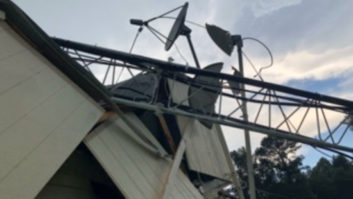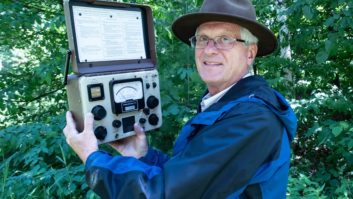I’m in a number of online low-power FM groups; and with the recent expansion of the LPFM service, I have been seeing a lot of queries from people with little experience in engineering and broadcasting. Some questions are excellent, but others are almost frightening in their lack of understanding.

LPFM broadcasters are shown unloading a Collins transmitter during a workshop. From the website of the Prometheus Radio Project. Below is a sampling, plus my observations based on my experience in noncommercial low-power FM stations. My comments here assume a bare-bones operation. There are many levels of possible complexity to building and managing your station. And to help answer questions, we’ve also tapped industry experts including attorney John Garziglia, LPFM consultant Michi Bradley, and engineers Michael LeClair, Cris Alexander and Tom Osenkowsky, the three of whom also contribute to Radio World.
For all questions regarding technical performance or legal liability, I strongly recommend that you talk to a broadcast engineering consultant or licensed broadcast lawyer with expertise in the LPFM area. By doing it right the first time — seeking experienced engineering and assistance with choosing the right gear — you can save a lot of money (and potential fines).
Here are some questions I’ve seen recently.
If I combine a 5/8-inch vertical antenna with a circular polarized antenna, what kind of pattern will be produced and what kind of coverage should I expect?
Combining different styles of antennas is a no-no. RF energy is a science, not an experiment. Antennas work with or against one other to produce proper signal. In some cases, this can create useful “gain,” but in others it might produce a “null” or void in the signal.
LPFMs generally are not licensed to be directional FMs, i.e. they are not aimed in certain directions while suppressed in others); you must use proper antennas and not experiment with different types/polarities. But some may be directional if they are public safety stations or it is necessary to protect second-adjacent stations.
Also, in many cases a specific transmitting antenna make and model, along with the number of bays and spacing, were specified in the construction permit application to obtain a second-adjacent channel waiver. An applicant in that instance must use the specified antenna or an antenna with the same radiation characteristics. Finally, the FCC’s license application itself asks for the make and model of the transmitting antenna used, and any changes after the filing of the license application requires that either an amendment or an application for a modification of license be filed.
What will my power utility bill be?
A starting point is to ask a local electrician to perform a site study on your power usage. Knowing how much power a transmitter uses is relatively simple, but power rates change according to location and provider, and you will use power in other ways as well. In general, LPFM transmitters are all low-power units that draw a few hundred watts at most. Most of you facility’s power will likely be consumed by your studio equipment and studio lights, plus the air conditioning and heating systems. For more advanced LPFM owners, a rough monthly estimate for electrical use is:
0.001 × 2 × TPO (watts) × 24 × 30 × price per kWh
The estimated local price per kWh can be found by Googling the town/state name and electricity rate. Or look at a residential bill to get a +/-10 percent estimate.
Should I run my library through software and save all my audio files with the audio processing embedded into each file?
Keep in mind that when an audio file is “doctored” in any way (compressed, expanded, etc.) by an audio processor in Adobe Audition or other software, the modification becomes part of the song and can’t easily be undone.
General practice is to perform no processing to the audio file. There are varying opinions about MP3s, but I would suggest this: Don’t use them if at all possible! Stick with WAV files. They take up more hard-drive space, but that’s very cheap nowadays.
If you are stuck with using an MP3, try to insist on a minimum bit rate of at least 192 kbps. Anything lower can create bad sounding radio. MP3-128s and lower can produce degraded audio with strange-sounding sonic artifacts when used for over-the air-broadcasting. When a song is compressed, it cannot be uncompressed, at least audibly and sonically. You can turn an MP3 into a WAV file; that doesn’t put back what was taken away.
The only safe bet for “fixing audio” is a process often called normalizing. This simply takes the peak level and brings it up or down to 100 percent so every song basically has about the same “volume.” It does not take quiet passages and makes them louder. It simply looks at the entire song to make sure that songs recorded at a hot level are brought down to “normal” or quiet songs are brought up to “normal.”
Your station’s overall audio should be processed live and in real time, just prior to being transmitted. This allows you to “sweeten” or increase the levels at the transmitter. If you decide that you really want a “punchy” on-air sound, you can apply more processing; if later you decide you want music to maintain the original dynamics, this will still be possible, through adjustments at the on-air processor.
How many computers do I need to run my LPFM radio station?
It depends.
You need one for on-air playout (and automation, if you plan to use it). I would keep production on a different computer, even though today’s systems can handle multitasking. I also recommend having another computer as an office system for Internet functions, logs, etc. So I’d go with at least three, though production and office work could be multitasked onto one.
This brings up networking. I recommend keeping your on-air machine off the Internet or at least behind a firewall and second NIC (Ethernet port). The main point to consider here is protecting your on-air automation machine from harmful and destructive attacks coming in from the Internet.
My tower guy tells me that a tower in a residential neighborhood is going to be “frowned upon” and is mounting my antenna in a tree.
This comment raises myriad concerns. Yes, a “poor guy’s station” can use a telephone pole or a roof chimney mount with a 2-foot pole to support an antenna. But a tree is a living thing. It grows; it has a root and water distribution system. It may distort your RF energy. Seasonal changes may affect your coverage. It may tempt a youngster or other person to climb into harm’s way. How are you going to allow your run of coax to change as the antenna structure grows each year? Are you going to file with the FCC each year as you have a new height (or maybe every few years).
Keep in mind that the LPFM authorization specifies an exact set of geographic coordinates, and exact height, at which the antenna must be installed. Moving an antenna by more than a just a few feet in location, or more than 2 meters higher or 4 meters lower in height, will require that a modification application be filed with the FCC. Finally, the location must comply with the FCC’s radio frequency radiation guidelines. The FCC regards RFR non-compliance as a serious matter.
Is it true that if my transmitter is at least 8 feet above the floor, it will transmit farther?
No. Someone may have told you “an FM transmitter gets out further when it’s higher.” They were talking about the antenna, not the transmitter. Your transmitter will be mounted in a rack, and it’s a reasonable idea to keep it a few feet off the floor, no higher than eye level. But this is just for access and ease of service.
The above are but a sample of dozens of questions from new and pending LPFM broadcasters being posted every day. In many cases, the answer is really a matter of opinion; but others are cause for concern for technical performance, safety or legality.
If you have a construction permit for an LPFM, I invite you to reach out to your local radio stations (as well as TV) and introduce yourself to start creating your own network of broadcast support contacts. Join the Society of Broadcast Engineers and attend local chapter meetings. Your local engineers can be a source of great advice and maybe used gear. Sign up for free subscriptions to broadcast engineering, programming and management magazines. Look for resources that are reliable for information, like the Radio World eBook “LPFM 2014” available for free at www.radioworld.com/ebooks.
Meantime, a qualified broadcast engineering consultant or licensed broadcast lawyer with expertise in LPFM is invaluable.
And if you are a broadcast engineer, please consider reaching out to LPFM stations. I know sometimes “new guys on the block” ask questions that are, to put it mildly, interesting; but your experience and helpfulness might save both them and you some headaches. LPFM folks are excited about radio in a way that reminds us of the medium’s true appeal — and your next assistant engineer might just be cutting his or her teeth at that little LPFM on the other side of town. Responsible LPFMers are not trying to cause interference or make your life difficult; they’re here because they have the same broadcasting bug that bit you years ago. They’re eager, excited and chomping at the bit to play in this world of radio.
My thanks to Michi Bradley, Cris Alexander, Michael LeClair, Tom Osenkowsky and John Garziglia for their input. Comment on this or any story. Email[email protected]with Letters to the Editor in the subject line.





